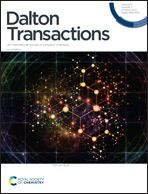New phthalonitrile/metal phthalocyanine–gold nanoparticle conjugates for biological applications
Abstract
The emergence of nanoscience and its effect on the development of diverse scientific fields, particularly materials chemistry, are well known today. In this study, a new di-substituted phthalonitrile derivative, namely 4,5-bis((4-(dimethylamino)phenyl)ethynyl)phthalonitrile (1), and its octa-substituted metal phthalocyanines {M = Co (2), Zn (3)} were prepared. All the newly synthesized compounds were characterized using a number of spectroscopic approaches, including FT-IR, mass, NMR, and UV–vis spectroscopy. The resultant compounds modified the surface of the gold nanoparticles (NG-1–3). Characterization of the newly synthesized conjugates was carried out by transmission electron microscopy. The antioxidant activity of compounds 1–3, NG-1–3, and NG was evaluated using the DPPH scavenging process and the highest radical scavenging activity was obtained with compounds 1, NG-1, 2, and NG-2 (100%). The antimicrobial activity of compounds 1–3, NG-1–3, and NG was studied using a microdilution assay and the most effective antimicrobial activity was obtained for NG-3 against all the tested microorganisms. The newly synthesized compounds demonstrated high DNA cleavage activity. Compounds 1–3, NG-1–3, and NG significantly inhibited the microbial cell viability of E. coli and exhibited perfect antimicrobial photodynamic therapeutic activity with 100% inhibition after 20 min LED irradiation. Besides, the biofilm inhibition activity of compounds 1–3, NG-1–3, and NG on the growth of S. aureus and P. aeruginosa were examined and compounds 1–3 and NG-1–3, especially NG-1–3, displayed high biofilm inhibition activities.



 Please wait while we load your content...
Please wait while we load your content...